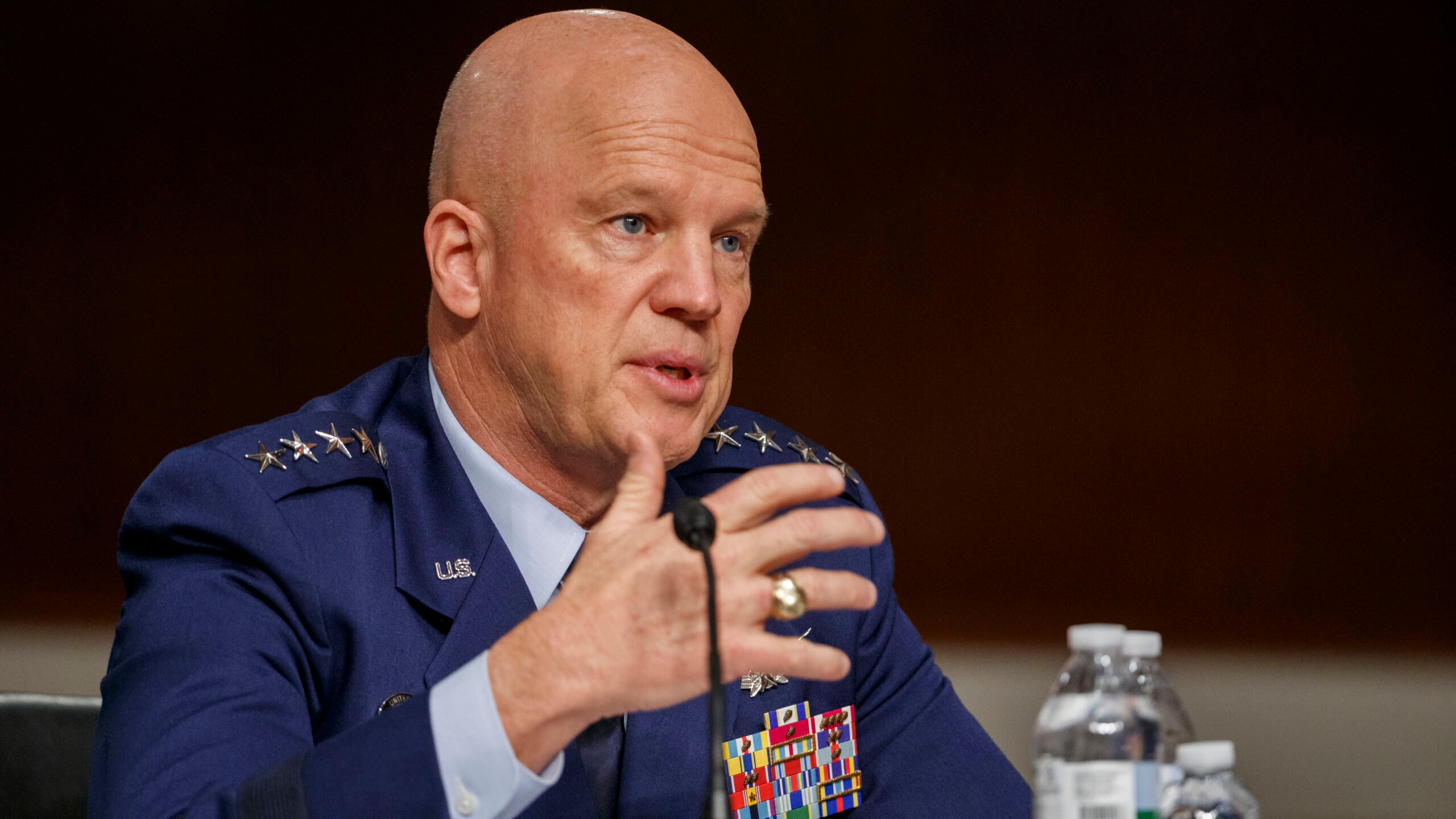
Chief of Space Operations at U.S. Space Force General John W. Raymond testifies before the Senate Armed Services Committee hearing on Capitol Hill on May 6, 2020 in Washington, DC. (Photo by Shawn Thew – Pool/Getty Images)
WASHINGTON: The Space Force’s top priority this year, and far beyond, is to redesign current space capabilities so that they are less vulnerable to adversary attack, Space Force chief Gen. Jay Raymond said today, pointing especially to China’s leap to near-parity with the US.
“The big focus area for us this year, and probably for the next decade, is shifting our space architecture to a new, more resilient architecture by the design of the force,” he told the Air Force Association’s annual conference in Orlando. “The capabilities that we have in space are exquisite, they’re small in numbers, and they’re not easily defendable.
“Our joint and coalition forces that are requiring the space capabilities that we provide, and they can’t be treated as a given anymore,” he continued. “And so we’re going to continue to provide those capabilities and do so in a way that’s more resilient so we can assure that.”
Raymond explained that the 2021 National Defense Authorization Act instructs the Secretary of Defense to delegate “force design” work to the Space Force — a job already that is being undertaken by the Space Warfighting Analysis Center.
“So no longer do you have 60 different people trying to come up with things,” he said. “Our goal is to drive that unity of effort across the department, and then get everybody rowing in the same direction. And then tee that up for the Secretary of the Air Force and the DoD governance structure to make the decisions, and then we can move out at speed and reduce duplication, reduce costs.”
Repeating his long-standing mantra, Raymond pointed in particular to the challenges raised by China’s expanded and enhanced military space capabilities.
“They have integrated those capabilities into a warfighting architecture, so that if deterrence were to fail, we are now going to be up against an adversary that has the same advantages as we’ve enjoyed,” he said.
Raymond stressed that the space domain is fundamentally different than even just three years ago, and thus requires “a different approach” by the US military. The spectrum of growing threats, he said, ranges from “low-end, reversible jamming” to “high-end kinetic destruction.”
Further, space has become more than twice as crowded in that time frame, he said, as the boom in commercial space business around the world continues.
“If I were here three years ago, I would have told you we’re tracking about 22,000 objects. Today we’re tracking close to 50,000 objects in space. Three years ago I would have told you we’re tracking 1,500 satellites. Today we’re tracking almost 5,000 satellites,” Raymond said.

Space junk is an increasingly dire problem. (NASA illustration)
Space Command head Gen. Jim Dickinson, in his later remarks to the AFA conference, also touched on the increasing congestion in space — providing a slightly more precise number of “about 44,000 space objects” being tracked. Space Command’s 18th Space Control Squadron is responsible for detecting and tracking satellites, spacecraft and dangerous space junk, via a network of telescopes and radar called the Space Surveillance Network.
On the other hand, Raymond noted that growing commercial space capability is something Space Force can use to move toward its goal of greater resiliency at a faster pace.
“I think there’s great advantage with commercial industry that’s out there,” he said. “We want to leverage that.”
In addition, Raymond stressed the need for the US to continue to improve partnerships with allies on space activities, something he said DoD has made “significant progress on” since the stand up of Space Force and Space Command.
For example, the Pentagon just last week signed a new “call to action” for future collaboration in defending their interests in outer space, including potential development efforts to fill gaps in their collective capabilities.
“We need them in a big way with with the domain becoming a warfighting domain,” Raymond said.






















